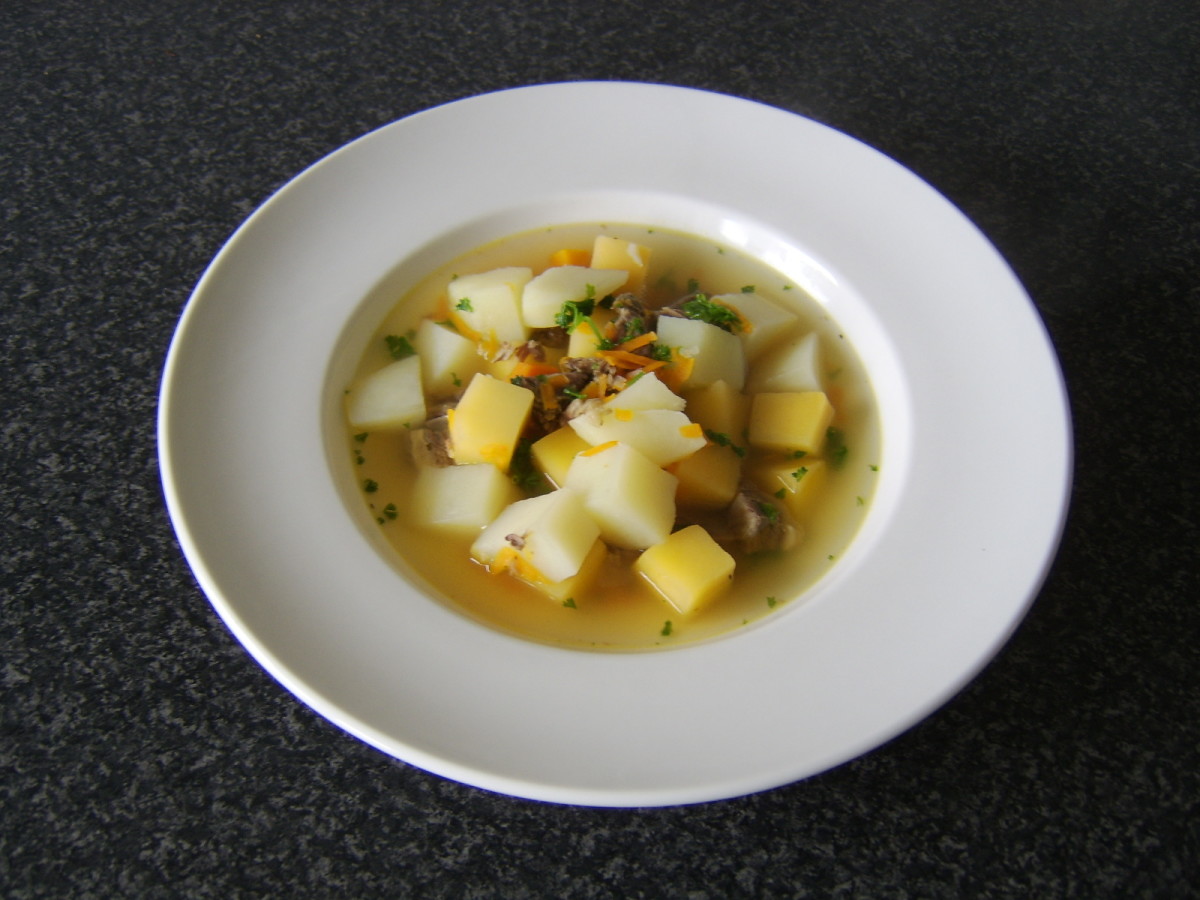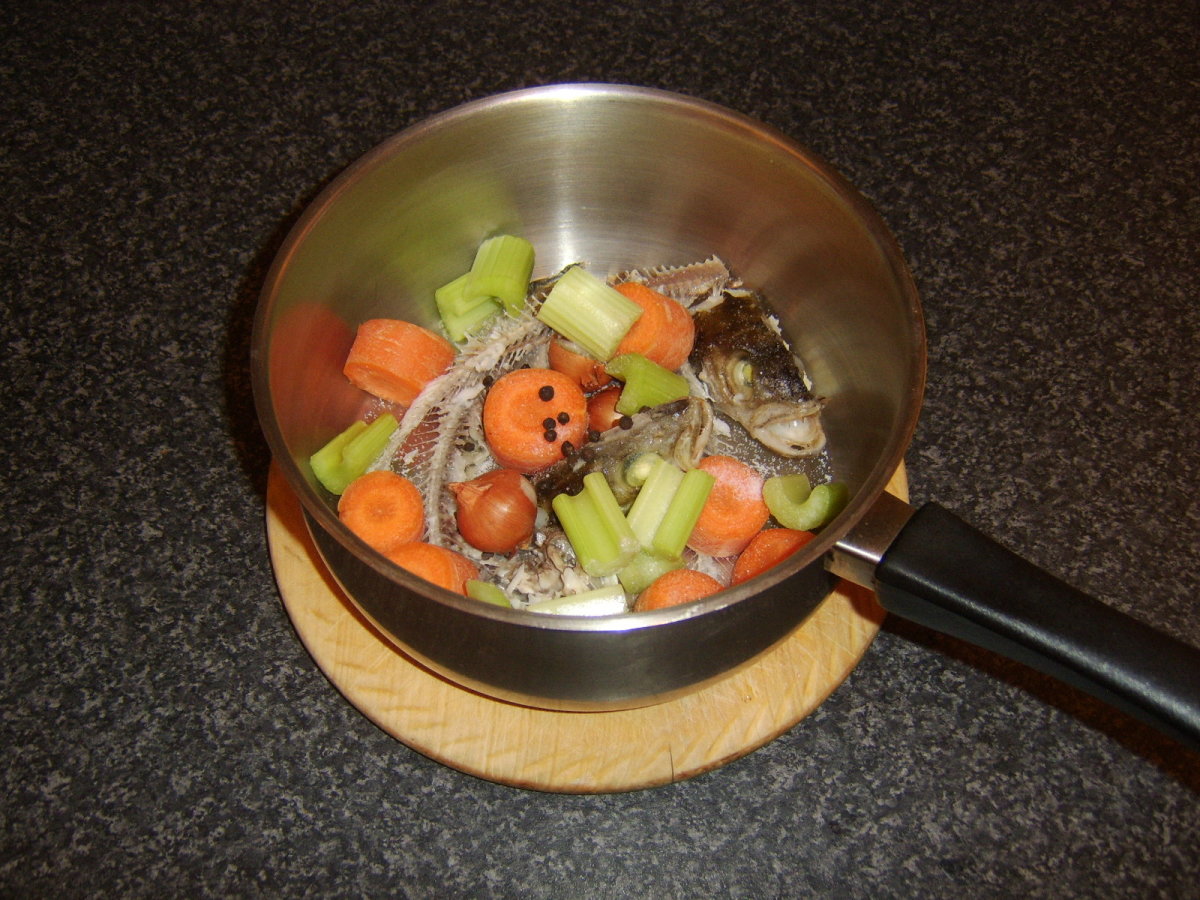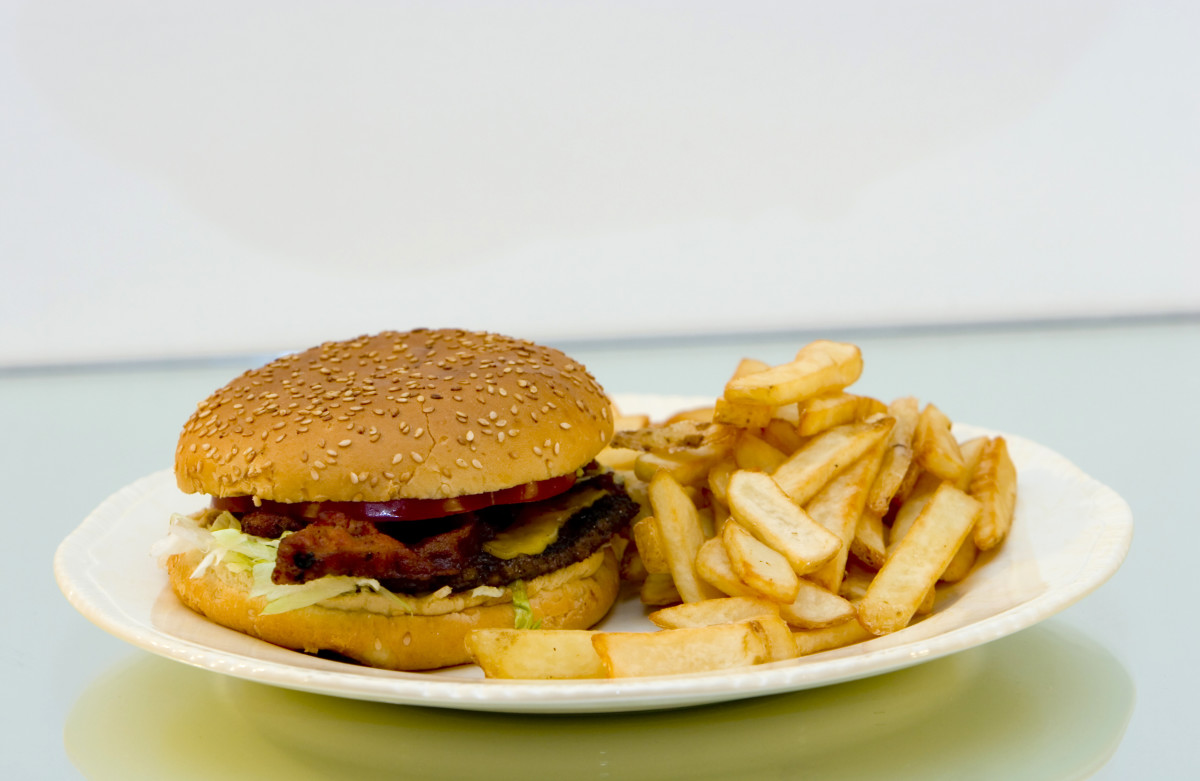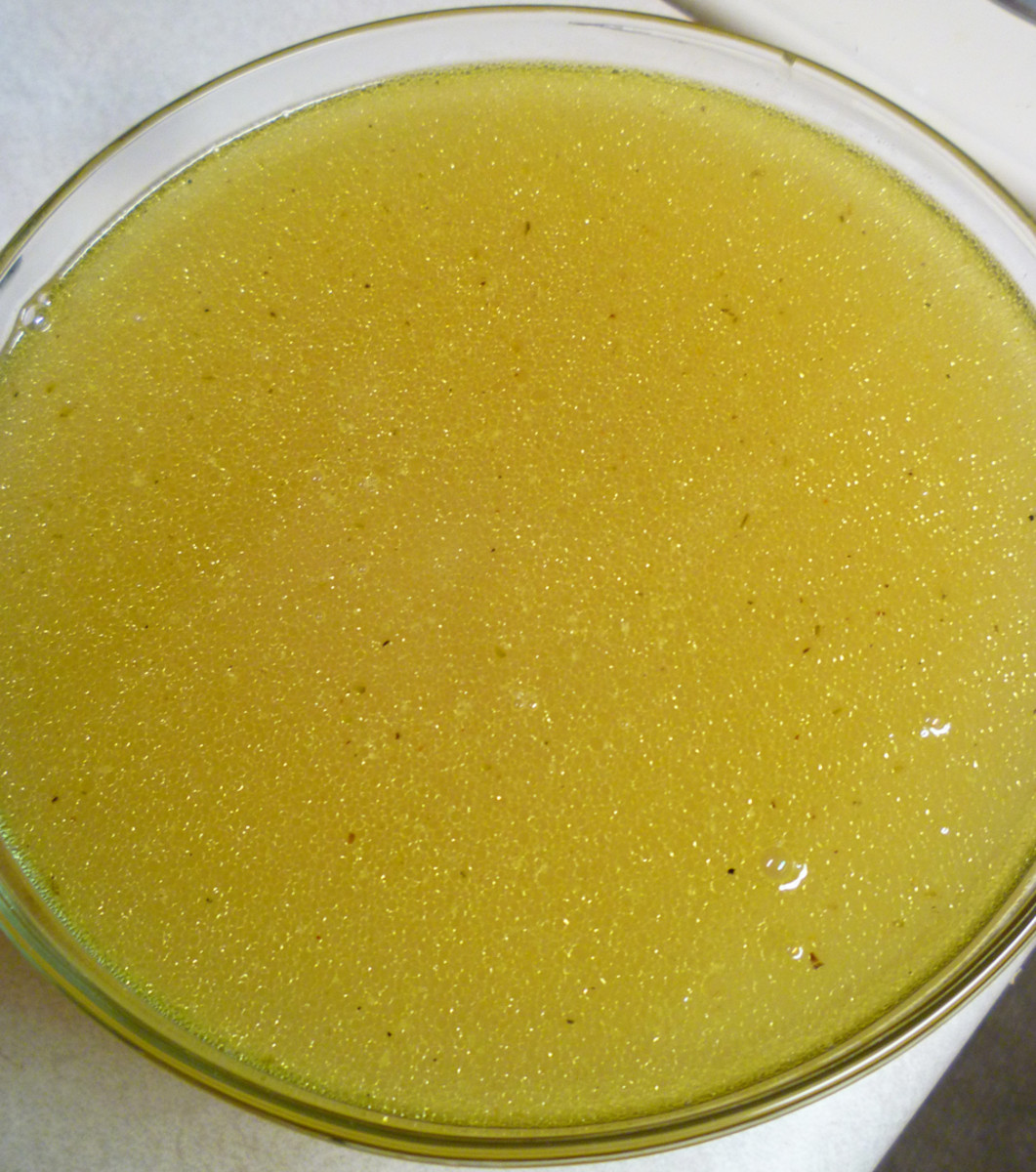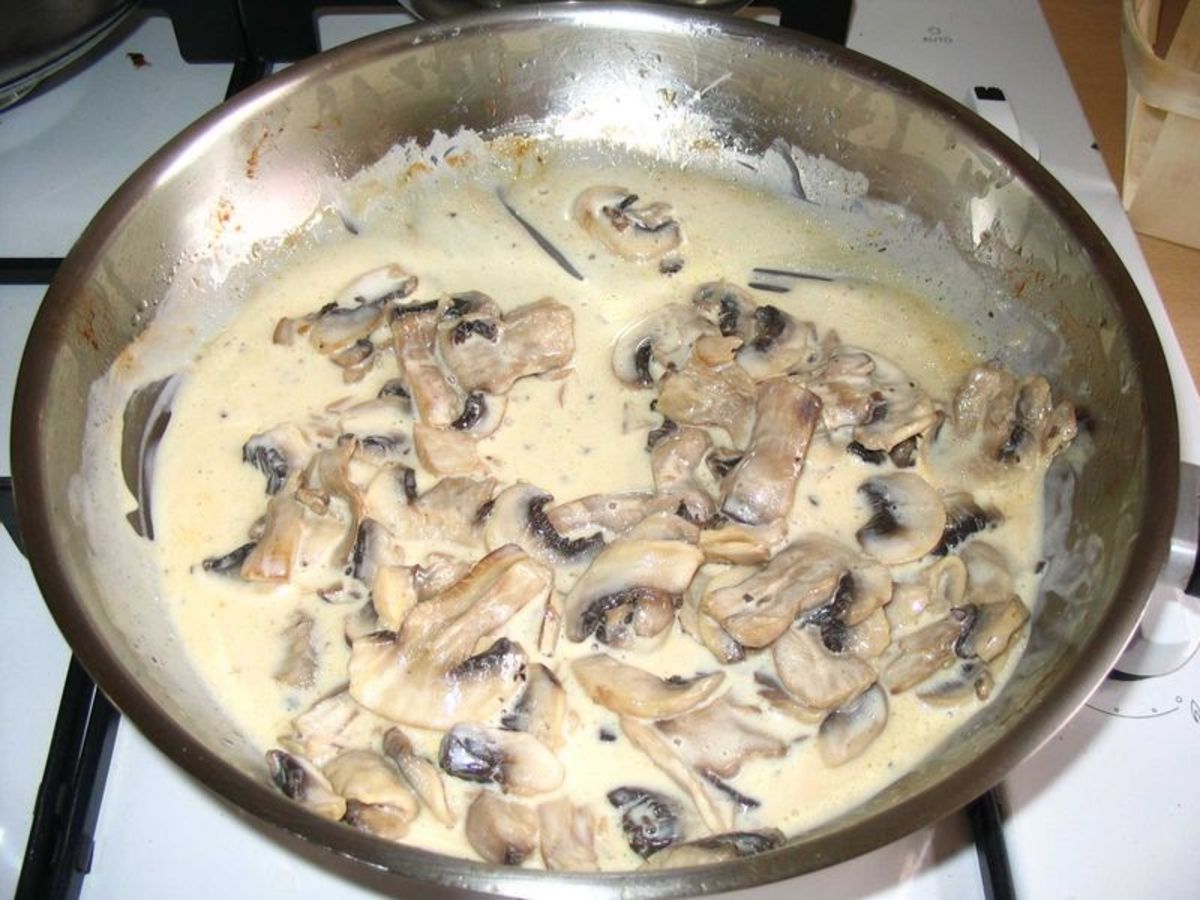How To Make HomeMade Vegetable Stock :: It's Free Food!
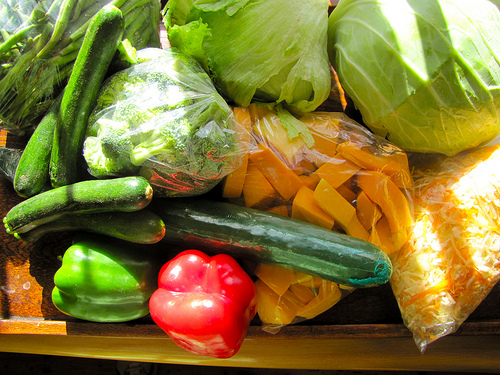
Turn Your Veggie Scraps Into Free Food!
So why would anyone want to make their own Homemade Vegetable Stock? Well, if you're like me and you throw away lots of vegetable scraps - or if you like to compost your vegetable scraps and trimmings - you can turn them into FREE Food! Vegetable Stock has countless uses in the kitchen, and always having some on hand can improve a whole slew of your favorite recipes.
Do you ever:
- Poach chicken?
- Make roast beef in the crock pot?
- Brine poultry?
- Make soup?
- Cook dry beans?
- Make gravy?
- Have Beef Stew?
- Make chili?
All of these can be improved with Home Made Vegetable Stock.
And since using scraps to make Vegetable Stock can lead to
inconsistent (though always tasty!) results, I'll give you a simple and
straight-forward recipe that uses fresh veggies that will always give
you a delicious Vegetable Stock!
What is Vegetable Stock?
Vegetable "Stock" is actually a bit of a misnomer - basically, any "stock" is a liquid flavored with meat and bones while a "broth" is a liquid flavored just from meat. Since vegetables don't really have "meat" or "bones", vegetable stock and broth are pretty much the same. The main difference between commercial vegetable broth or vegetable stock that you can buy in the supermarket is the concentration: broth tends to be more watery, and can be eaten as-is (it's basically watered-down stock); stock is more useful as an ingredient rather than as something you eat on its own.

Make Free Food From Trash!
If you frequently find yourself throwing away or composting vegetable trimmings and scraps, you should start saving them instead. I always have a zip-top plastic bag in the freezer that I use to store my scraps.
My family now knows that if they have scraps from vegetables they should put them in the plastic bag in the freezer instead of in the trash. If you compost, then you've probably got your family trained already - but now, instead of saving those scraps and trimmings for the composter, put them in the freezer first. After you've used them to make Stock you can still put them in the composter!
Almost everything you would otherwise throw out or compost can be used for Vegetable Stock.
- Carrot Peelings and ends
- Potato skins
- Onion skins and ends
- Garlic stems and skins
- Broccoli stems
- Zucchini skins and stubs
- Cucumber skins and ends
- Celery leaves and stubs
- Bell pepper tops
- Corn cobs
- Cauliflower stems
Basically, any part of any sort of vegetable that you might use in a soup recipe can be used for your Vegetable Stock! The only things I would avoid are tough fibrous scraps, like corn husks, and seeds like those found in tomatoes and bell peppers. These are usable, but they might give your Stock a bitter flavor...

Uses for Vegetable Stock
You can substitute Vegetable Stock for water many recipes. Here's just a few:
- Beef stew crock pot recipe
- Black bean soup recipe
- Chicken soup recipe
- When brining meats, use Stock instead of water for a deeper flavor
- Any crock pot soup recipes
- Healthy vegetable soup recipes
- Minestrone soup recipe
- To make a sauce for your ground meat in tacos and burritos
- All kinds of recipes for vegetable soup
- Slow cooker recipes that braise or poach meat (roast beef, poached chicken, roast pork, lamb stew, etc.)
- Vegetarian chili recipes (or meaty chili recipes!)
- All vegetarian soups will benefit from Stock in place of water
- Rice can turn from blah to flavorful by using Vegetable Stock instead of plan water
- Use Vegetable Stock in place of wine when de-glazing pans to make sauces and gravies
Those are just a few ideas, and once you start using Vegetable Stock in your cooking, you'll find that it's surprisingly useful in the kitchen!

Basic Vegetable Stock Recipe
This recipe can be used whether you want to use scraps that
were destined for the trash or if you want to use fresh whole veggies to
make your Stock.
Ingredients:
For the fresh veggie alternative, here's what you'll want to use for a
fool-proof Vegetable Stock:
- 2 whole unpeeled carrots,
each cut into thirds
- 1 medium onion, quartered, with skin intact
- 3 stalks celery, including leaves, cut in half
- 2 whole unpeeled cloves garlic
- 2 quarts water
If you're using scraps, the quantities are not an exact science!
Basically, you want to dump them into a soup pot and add enough water to
"double cover" them. By "double cover" I mean that you should add
enough water to come to twice the depth of vegetables in the pot. So, if
you have enough scraps to fill the pot three inches deep, then add
enough water to fill the pot six inches deep. Basically, it's twice as
much water as veggies!
(Note that I don't add any spices to the Stock - not even salt and
pepper. These can be added later when you use the stock in your recipes,
and if you add them now you run the risk of over-seasoning later!)
Directions:
Whichever way you choose to go, the rest is the same:
- Place the veggies and water in a soup pot and turn the heat to high.
- Let the mixture come to a boil and reduce the heat to medium-low to achieve a slow simmer.
- Continue to simmer uncovered, stirring occasionally, until the liquid is reduced to about 2/3 of what you started with.
- Make sure not to overcook the Stock or it will become bitter! As a
basic guideline, for the quantities listed above for fresh veggies
thecooking time should be about 35-45 minutes.
- Let the Stock cool for about 45 minutes, but not more than an hour for best flavor!
- Strain the Stock into a large bowl or measuring cup. I like to place a spaghetti strainer inside a fine-mesh colander and put both over the bowl or measuring cup. This ensures that any chunks that escape through the big holes in the spaghetti strainer don't end up in the final product!
Once the Stock has completely cooled, transfer it into smaller
freezer-safe plastic containers. I usually divide it up into 2-cup
batches.
The Vegetable Stock can be frozen for a couple of months, but I find
that it never lasts that long in my kitchen! I have enough scraps to
make about 2 quarts of Vegetable Stock every other week, and that's just
about how much I use each week...



This Recipe is from Edweirdo's Cookbook!
Looking for more fast and easy cooking recipes?
Check out Edweirdo's Cookbook for great FREE recipes online!

Photo from http://www.flickr.com/photos/11115086@N00/ / CC BY 2.0

